Inside ‘The Scratching Pad,’ a Cat Shelter Run Out of One Man’s Apartment
by Meghan Nesmith
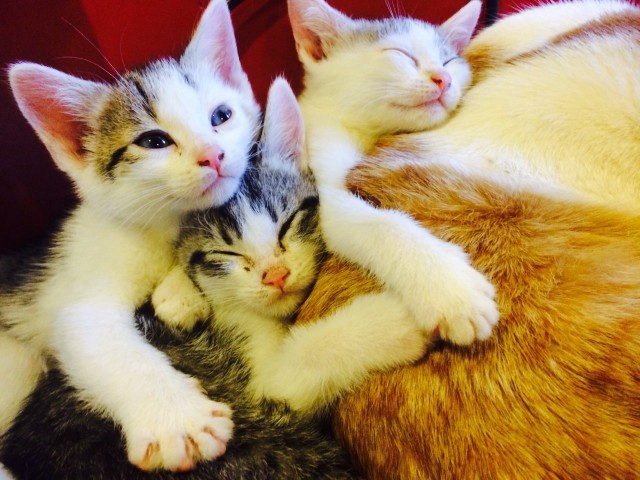
If you’re a New Yorker with a beating heart, you probably remember the subway kittens that shut down the MTA last summer in the most adorable way possible. If you’re a cat lady like me (which oh praise is now a badge of honor, thanks New York Times), then you might already know Steven Liu, the guy behind the Scratching Pad, who took in the tiny bandits and fostered them through their eventual adoption. In July of last year, Steve found a duplex apartment in Bushwick, moved in with two roommates, and started taking in cats — current total eight.
When Steve answers the door and gives me a one-armed hug while using a foot to stop a cat from sneaking out, I decide he’s the kind of dude who has probably gone to Burning Man. He just got back from doing SXSW with $100 and a pillow, and blogged about sticking it out in Zone A during Sandy, so it’s safe to say this isn’t his first foray into social media-cum-activism-cum-whatever the cool kids are calling “marketing” these days. When he discovered one of the cats he’d taken in was pregnant, he was nonplussed. “Part of my life is to create content, and so I was excited ’cause kittens are like, the ultimate content.”
We talk about what it’s like to be a one-man cat rescue agency, while the four five-week old kittens crawl into, over, and under everything. Two of them nurse briefly. They get stuck behind corners. They pile into a kitten lump on my lap and fall asleep. They crawl over Barb, the aunt cat, who licks them softly and gathers each one into her arms in turn, and then we all die of cute.
“That’s Sunkist,” he says, pointing to a cat perched on a railing, and then shakes his head. “No, wait, that’s Barb. She pokes things.” He found Barb on the street. The mother cat came through his neighbor. There’s another I never see who hides in the basement. Sunkist, the official house cat, was purloined from a litter Steve was given to foster by the AC&C.
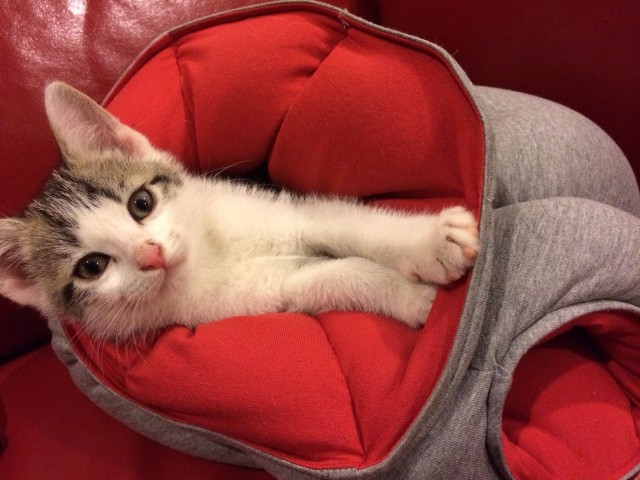
“Are these all of them?” I ask at one point, and he sort of looks around helplessly.
There’s something blissfully incongruous about the whole picture, and since I feel like I’m always just one step away from 10 more cats, I have to ask him where this all came from.
“So everything I do starts with like, a crazy idea,” Steve says. “There’s probably more views per cat than per human on the web, and I was wondering, like — why doesn’t anyone have a cat talent agency? I came up with the prototype of this idea two years ago — you know, why don’t people take animals that need to be adopted and shoot videos? And I just didn’t act on it until recently. I had a friend who was basically willing to invest in anything I wanted to do.”
“Like an angel investor?”
“Yeah. And this was it.”
“This” is the apartment full of cats, all of whom have been abandoned, and are looking for new homes. The shelter system in America is notoriously overburdened, so foster digs are one of the best ways to keep unwanted pets out of high-kill shelters and to give them a chance at a new life. It’s warm and fuzzy and totally unsustainable as a financial model. I ask Steve how he’s surviving with no day job.
“I was in finance. I used to work in a bank. Now, I’m somehow managing to do this without getting paid. But it’s really only sustainable for like a year or so.”
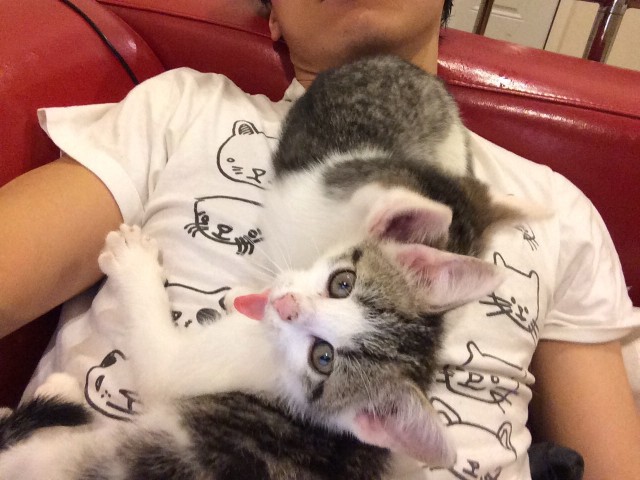
His blog doesn’t make money yet, and he has to support the cats — food, litter, vet bills. But, he says, “I have a very specific plan to monetize the whole thing.”
He shows me a really snazzy Powerpoint-type thing with lots of Venn diagrams and cute photos of cats. This is a good business plan, I think. (I know nothing about business.)
“The future of advertising,” Steve says, “should be about creating content. And I see people — like bloggers — doing this, but they aren’t doing it well. “
He pulls up a video of a popular blogger shilling hand lotion. The ad is polished and cute but product heavy, and — he’s right — doesn’t feel at all authentic.
“The difference is that I don’t have to say anything. I just want to identify what are the best products for cats. And that’s honest. Like, I live in this crazy cat house — what are the products that are going to make my life easier. I’m going to say to a brand, I like your product, and if you want to sponsor it so that everything I post has more reach, that’ll help you. And if you don’t, that’s fine, I’m not going to change what I’m saying.”
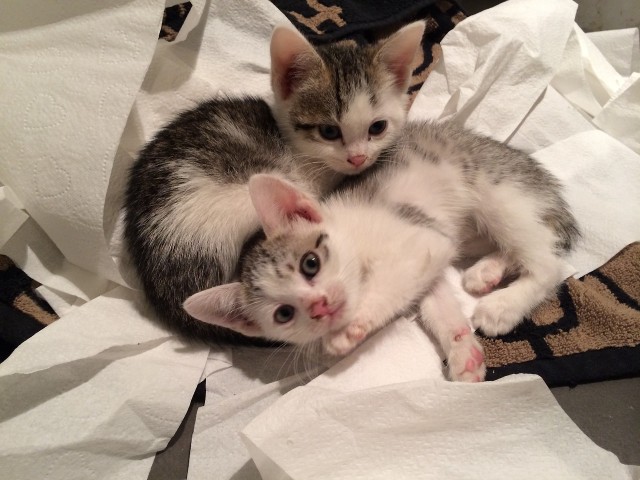
We look at one of his posts: two kittens spooning in a cat bed. I make some more squishy noises. His hope is that the brands behind products like that cat bed will see the advantage of positioning themselves altruistically — all of these cats need to be adopted, so any promotion helps to find them stable homes — and will eventually get wise to this subversive native advertising, which will in turn fund more fostering. “It’s a way to do marketing the right way,” Steve says.
The evolution of content marketing has blurred the line between true earned media and brand-sponsored third-party content, so while using kittens as a marketing ploy might seem cynical, what Steve is doing is actually a step in the right direction. And there’s more than just that.
“It’s not just branded posts,” he says. “That’s not quite it. What I really want to do is this…” He pulls up his most popular post to date: an infographic, with illustrations by a friend, of the harmful effects of declawing.
“I met with the directors of all of these shelters and honestly, there’s so much information you need as a first time pet owner […] I’d like to do infographics like this on nutrition, litter boxes, whatever — and right now they are all textual articles — “
“Yeah, I read them all when I was adopting my cat.”
“Right, and how many do you actually remember? So I wanna make a really graphic guide, like a pet adoption guide, a standardized version so that every time someone adopts a cat they get this guide — a link or a pamphlet or whatever — “
“Would they pay for it?”
“No, it’s free. But you could embed advertising in the link, with content sponsored by these brands.”
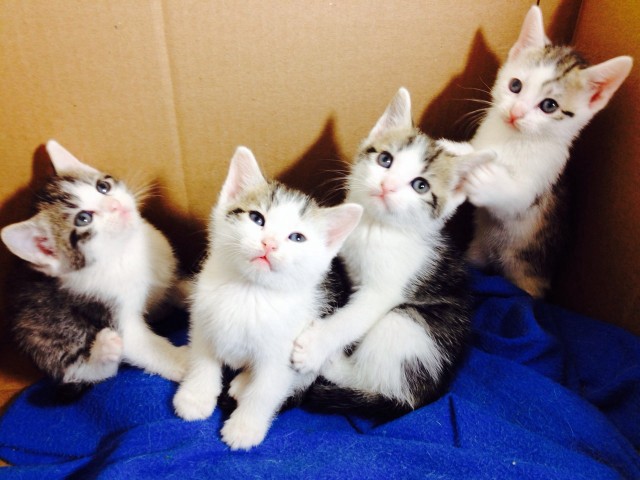
There’s a genius to this — a way to merge new media and social good. As Steve puts it, “A way to make volunteerism sustainable.”
By the end of our conversation, it’s clear that Steve is in this 70% social experiment, 30% cat. In fact, when I ask him if he does in fact love cats, he sort of shrugs. “Yeah, sure. I mean, I like dogs and cats, but dogs smell.” I point out that cats shit in your house. “Maybe I’m just used to it now?”
Does the desire for media significance somehow cheapen the good? I’ve worked with a few foster networks and then were all inefficient, confused, run by sweet old ladies with next to no social media or web presence. They were kind and ridiculous and totally ineffective. All the bleeding hearts in the world aren’t going to be able to manage the problem of abandoned or neglected pets. What Steve is proposing upends this model in a beautiful, effective, and not altogether un-self-serving way. Ultimately, Steve is providing a safe, nurturing space for abandoned cats and if he happens to create a media empire along the way, more power to him.
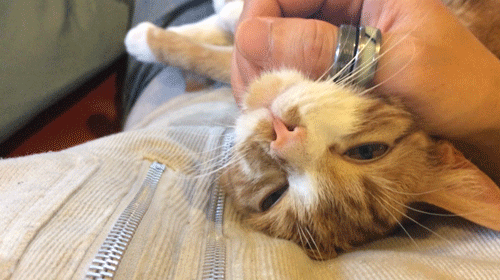
Wanna help? Follow the Scratching Pad on Twitter, Instagram, Facebook, etc. Tell a friend. Contact Steve if you happen to be a media or marketing genius with a love of kittens to help him get to phase two. And if you’re looking for a cat, he’s your dude.
Meghan Nesmith writes and sleeps in Brooklyn.
Support The Billfold
The Billfold continues to exist thanks to support from our readers. Help us continue to do our work by making a monthly pledge on Patreon or a one-time-only contribution through PayPal.
Comments